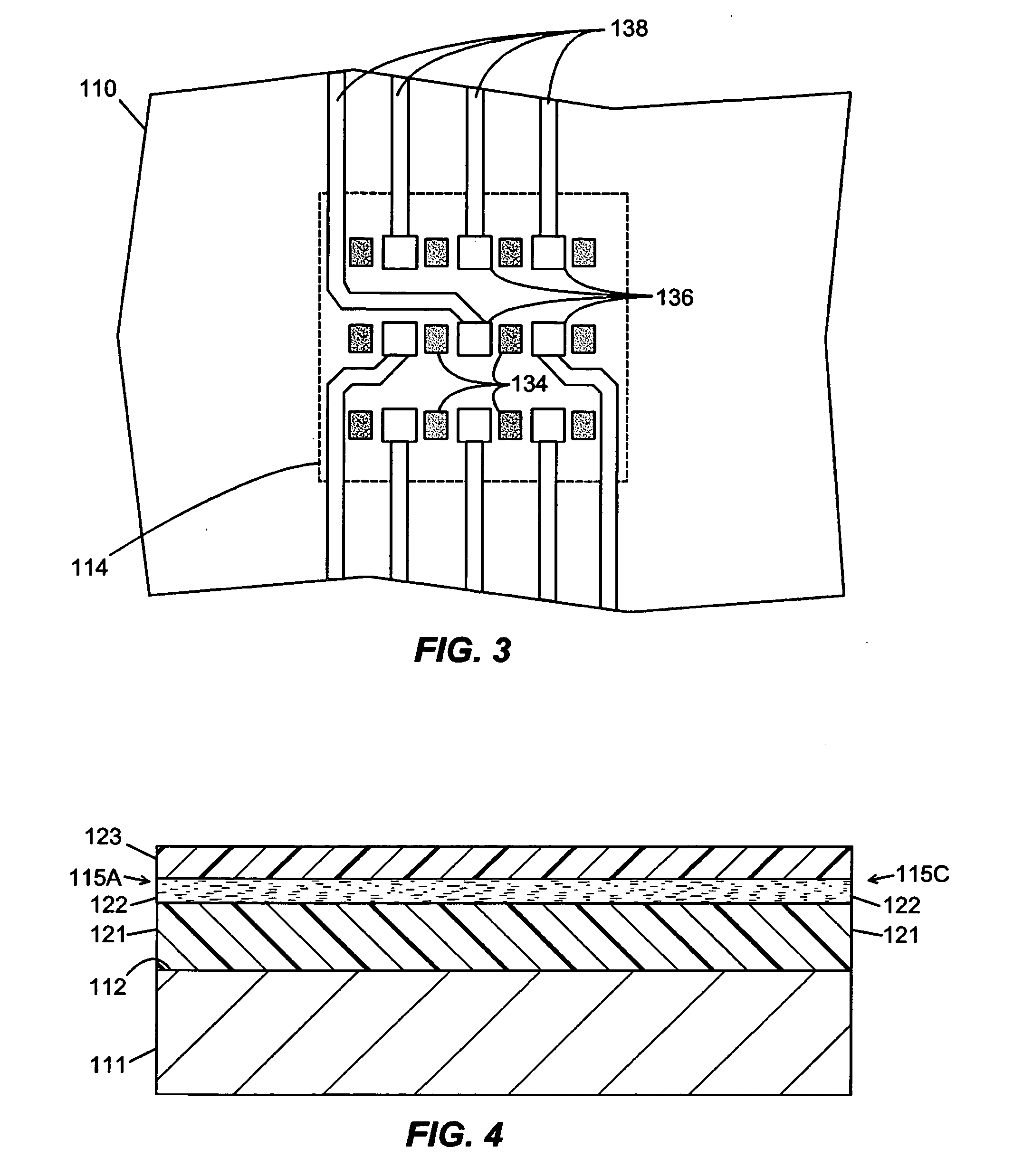Apparatuses and methods for integrating opto-electric components into the optical pathways of routing substrates with precision optical coupling and compact electrical interconnection
a technology of opto-electronic components and optical pathways, applied in the direction of optics, optical light guides, instruments, etc., can solve the problems of complex optical communication systems with large number of opto-electronic devices and high degree of functionality, and use less effective opto-electronic devices, so as to reduce signal delay to devices, improve the accuracy of optical alignment, and improve the effect of integration
- Summary
- Abstract
- Description
- Claims
- Application Information
AI Technical Summary
Benefits of technology
Problems solved by technology
Method used
Image
Examples
Embodiment Construction
[0018] A first embodiment 100 of an optical apparatus according to the present invention is illustrated in FIGS. 1-3. A top plan view of optical apparatus 100 is shown inFIG. 1, a cross-sectional view is shown in FIG. 2, and second top plan view is shown in FIG. 3 with a component removed (as explained below). Referring to FIG. 1, Apparatus 100 comprises a main optical board 110 having a top surface, and an attachment area 114 located at the top surface for receiving an opto-electric component 210. Main optical board 110 comprises a plurality of optical waveguides 115A-115D, and opto-electric component 210 comprises a plurality of opto-electric devices 215A-215D. Each waveguide 115A-115D preferably has a microlens formed at its end, with the end being disposed adjacent to a side of attachment area 114 and facing opto-electric component 210. The microlenses of waveguides 115A and 115B serve to collimate or cross-collimate the waveguide's light beam into a light beam having a broader ...
PUM
 Login to View More
Login to View More Abstract
Description
Claims
Application Information
 Login to View More
Login to View More - R&D
- Intellectual Property
- Life Sciences
- Materials
- Tech Scout
- Unparalleled Data Quality
- Higher Quality Content
- 60% Fewer Hallucinations
Browse by: Latest US Patents, China's latest patents, Technical Efficacy Thesaurus, Application Domain, Technology Topic, Popular Technical Reports.
© 2025 PatSnap. All rights reserved.Legal|Privacy policy|Modern Slavery Act Transparency Statement|Sitemap|About US| Contact US: help@patsnap.com



